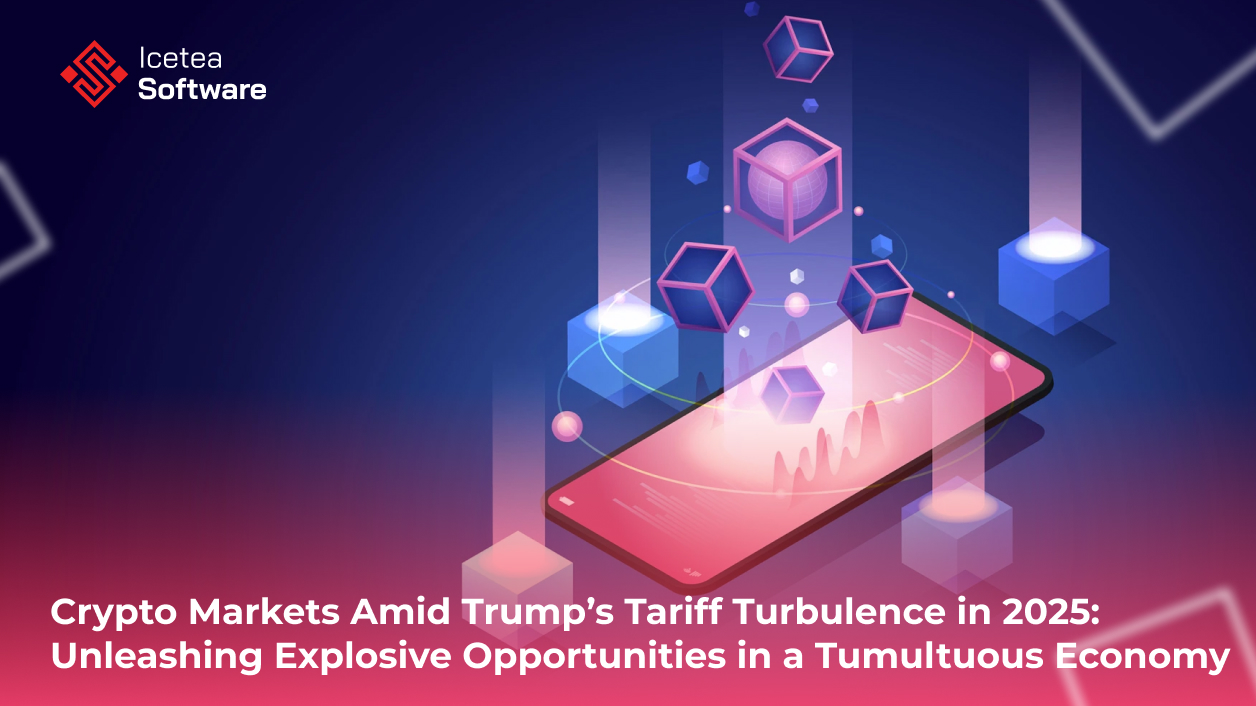Crypto Markets Amid Trump’s Tariff Turbulence in 2025: Unleashing Explosive Opportunities in a Tumultuous Economy
Introduction to Tariff Policies and Their Economic Role
Tariffs, essentially taxes imposed on imported goods, have long been used by governments to protect domestic industries and counteract what they consider unfair trade practices. Under President Trump’s administration, tariffs took on an especially aggressive tone. These measures were not only designed to protect local industries but also to pressure major trading partners into renegotiating their terms. The result, however, has been a series of market disturbances that ripple through various sectors—most notably technology and cryptocurrencies.
When tariffs are introduced, they disrupt the global supply chain, influencing input costs and triggering retaliatory measures by affected nations. In the volatile environment of modern financial markets, such disruptions translate into rapid shifts in investor sentiment. At times, fears of a prolonged economic slowdown surface, while at other times, even short-lived relief—such as a temporary pause on tariffs—can set off significant market rallies.
In this context, it is important to explore how these policy decisions have affected one of the most closely watched financial instruments today: Bitcoin. The fluctuating fortunes of this cryptocurrency offer a microcosmic view of broader investor behavior in response to geopolitical events.
The Crypto Angle: Bitcoin and Market Sentiment
At the core of the crypto market’s reaction to tariff news is Bitcoin, the flagship cryptocurrency that often serves as a bellwether for the broader digital asset ecosystem. In one of the scenarios discussed, Bitcoin was trading roughly 29% below its record high—a level reached during a significant political milestone—indicating the deep impact tariff fears were having on market sentiment.
Analysts outlined three potential scenarios for Bitcoin in this volatile environment:
- In the first scenario, progress in trade negotiations might take weeks or even months to materialize. This “gradual” scenario suggests that both cryptocurrencies and equities could continue to experience downward pressure until investors see clear signs of de-escalation.
- The second scenario considered the best-case possibility: a rapid negotiation that leads to an immediate pause or de-escalation of trade tensions. In this case, Bitcoin could quickly stabilize, potentially having reached its market bottom and setting the stage for a swift rebound. However, this outcome is viewed as less likely given the realistic timeframe for trade negotiations.
- The worst-case scenario involves an escalation of the trade war—particularly between the U.S. and China—resulting in a global economic slowdown. Under these conditions, Bitcoin would likely continue to decline as investors shift away from riskier assets and seek safer investments.
This multifaceted analysis highlights how political uncertainty directly translates into market risk for Bitcoin. Investors, being sensitive to macroeconomic signals, quickly adjust their strategies in response to the shifting political landscape, causing dramatic swings in Bitcoin’s price. In many ways, Bitcoin functions as a barometer of broader economic sentiment, reflecting the collective fears and hopes of a market that is increasingly aware of global tensions.
The Immediate Impact of Tariff Announcements on Market Behavior
In contrast to the prolonged period of uncertainty during which Bitcoin’s price was under pressure, a separate episode saw a swift rebound following a key policy announcement. President Trump’s decision to implement a 90-day pause on certain reciprocal tariffs provided the market with much-needed relief. This pause was specifically aimed at countries engaged in negotiations with the White House, and it was enough to send shockwaves through both tech stocks and the crypto market.
Tech giants such as Tesla, Nvidia, and Intel saw significant gains following the announcement, driven by investor optimism that the temporary easing of tariffs would reduce economic headwinds. Tesla, for instance, experienced a surge of over 22% in its stock price in a single day—an indication of the market’s sensitivity to tariff-related news. Likewise, the temporary reprieve breathed new life into the crypto market, with Bitcoin bouncing back to levels above $82,000 and Ethereum recording an 8% increase.
This rebound underscores a key dynamic in modern markets: immediate policy signals, especially when delivered via social media platforms like Truth Social, have become catalysts for rapid market movements. Investors no longer wait for detailed analysis or press conferences; a brief announcement can trigger significant buying or selling, causing swift reversals in asset prices. In this instance, the temporary pause on tariffs was interpreted as a reduction in economic risk for countries involved in negotiations, leading to a broad-based rally across multiple asset classes.
However, the relief provided by the tariff pause was not without its caveats. While certain tariffs were temporarily suspended, key players like China were excluded from this measure. In fact, new, even harsher tariffs were announced for China, highlighting that the overall trade conflict was far from resolved. This partial reprieve meant that while markets could temporarily recover, the long-term risks remained significant. Investors remained cautious, knowing that any return to aggressive tariff measures could quickly reverse the gains made during the pause.
Broader Implications for Crypto and Tech Investors
The interplay between tariff policies and market performance offers valuable insights for investors across both technology and digital asset classes. The simultaneous movement of tech stocks and cryptocurrencies in response to tariff news is not accidental. Both sectors are perceived as being on the frontier of future growth, yet they are equally exposed to macroeconomic shocks. In times of geopolitical uncertainty, the cost of capital increases, and investor confidence wanes, leading to sell-offs in both sectors.
For tech stocks, the temporary easing of tariffs translates into expectations of lower production costs, higher profit margins, and improved economic conditions. Companies such as Apple and Microsoft, which had previously experienced severe downturns due to tariff fears, benefited immensely from the short-term optimism. Similarly, cryptocurrencies, which often thrive on investor sentiment and liquidity, saw their values rebound as market participants re-entered positions following the easing of geopolitical tensions.
It is important for investors to understand that such market reactions, though dramatic, represent only a temporary phase in a longer-term cycle. The inherent volatility of cryptocurrencies means that while they are highly reactive to macroeconomic signals, their long-term trajectory is shaped by fundamental trends such as technological innovation, network security, and market adoption. In the current environment, the tariff-induced fluctuations are more about pricing in political risk rather than undermining the underlying value proposition of digital assets.
For those who participate in both markets, the key takeaway is to adopt a balanced and diversified approach. This involves not only keeping a close eye on policy developments but also ensuring that risk is managed effectively through diversification and tactical positioning. It may mean shifting allocations between tech stocks and cryptocurrencies or employing risk management tools such as stop-loss orders and hedging strategies in volatile times.
Risk Management and Strategic Positioning
The recent episodes of tariff-driven volatility offer several lessons for managing risk in uncertain environments:
- Diversification Across Asset Classes: With both tech stocks and cryptocurrencies being sensitive to macroeconomic shocks, spreading investments across various asset classes can help mitigate losses in one area by offsetting gains in another.
- Staying Informed on Policy Developments: Given the impact of policy announcements on markets, investors must remain vigilant and informed. Monitoring reliable news sources, government releases, and even real-time updates on social media can help anticipate potential shifts in market sentiment.
- Focusing on Fundamentals: While market sentiment can drive short-term price swings, investors looking to build long-term wealth should emphasize the fundamental strengths of their investments. For cryptocurrencies, this includes network integrity, scalability, and real-world adoption; for tech companies, it involves assessing innovation, earnings growth, and competitive positioning.
- Employing Tactical Risk Management: In environments marked by rapid policy shifts, using tactical tools such as stop-loss orders, position scaling, and derivatives for hedging can help investors manage risk and reduce exposure to sudden market downturns.
By blending these strategies, investors can navigate the tumultuous waters of a tariff-induced market more confidently, positioning themselves to take advantage of both risks and opportunities.
A Look Ahead: Future Challenges and Opportunities
The future of the crypto market amid persistent tariff tensions remains uncertain. On one hand, the digital asset market may continue to be punctuated by bouts of extreme volatility as policy shifts and geopolitical events unfold. On the other hand, the long-term narrative for cryptocurrencies remains anchored in transformative technology and a trend toward broader adoption.
Several key scenarios could define the path ahead:
- Continued Policy Oscillation: If tariff policies continue to be used as political tools, investors might experience alternating cycles of volatility and recovery. Short-term trading strategies could thrive in such an environment, with investors seeking to profit from rapid swings in market sentiment.
- Escalation of Trade Disputes: A further intensification of the trade war—especially between major economies like the U.S. and China—could spark a global economic slowdown. In this worst-case scenario, the broader market could see extended periods of bearish sentiment, with riskier assets like cryptocurrencies facing deep corrections.
- Gradual Resolution of Trade Tensions: Conversely, if sustained negotiations eventually lead to a de-escalation of tensions, both tech and crypto markets may experience a more stable, albeit gradual, recovery. Even in this scenario, the residual uncertainty could persist, and investors may continue to see intermittent fluctuations as the market adjusts.
Regardless of the scenario, it is clear that digital assets and blockchain technology are increasingly becoming integral parts of the broader financial ecosystem. As traditional financial systems modernize and global supply chains evolve, cryptocurrencies may benefit from improved legitimacy and functionality. For instance, integration with mainstream financial services and increased regulatory clarity could attract institutional investors, providing additional stability to the market.
Final Thoughts
The saga of Trump’s tariff policies offers a vivid case study of how political decisions can dramatically influence market behavior in both traditional and digital asset classes. From the stark decline in Bitcoin as investors reacted to mounting geopolitical risks, to the spirited rebound following a temporary pause in tariffs, these events illustrate the complex interplay between political strategy and market dynamics.
Crypto markets, given their inherent volatility and sensitivity to global trends, provide an insightful window into how investor sentiment is shaped by policy actions. While the immediate impacts of tariff announcements are profound—triggering rapid swings in asset prices—the long-term potential of cryptocurrencies remains intertwined with their technological and adoption trajectories.
Ultimately, investors who combine cautious risk management with a forward-looking understanding of both traditional and digital financial markets will be best positioned to navigate the uncertainties ahead. In an age defined by rapid change and constant uncertainty, the ability to adapt and respond to new information is paramount. The lessons of recent tariff-induced market swings serve as a reminder that while short-term volatility is unavoidable, a well-diversified, fundamentally driven strategy can help unlock the long-term value inherent in transformative technologies like blockchain and cryptocurrencies.
————————————
𝐈𝐜𝐞𝐭𝐞𝐚 𝐒𝐨𝐟𝐭𝐰𝐚𝐫𝐞 – 𝐂𝐮𝐭𝐭𝐢𝐧𝐠 𝐄𝐝𝐠𝐞 𝐓𝐞𝐜𝐡𝐧𝐨𝐥𝐨𝐠𝐢𝐞𝐬
𝐖𝐞𝐛𝐬𝐢𝐭𝐞: iceteasoftware.com
𝐋𝐢𝐧𝐤𝐞𝐝𝐢𝐧: https://www.linkedin.com/company/iceteasoftware/
𝐅𝐚𝐜𝐞𝐛𝐨𝐨𝐤: https://www.facebook.com/IceteaSoftware/
𝐓𝐰𝐢𝐭𝐭𝐞𝐫: https://x.com/Icetea_software








